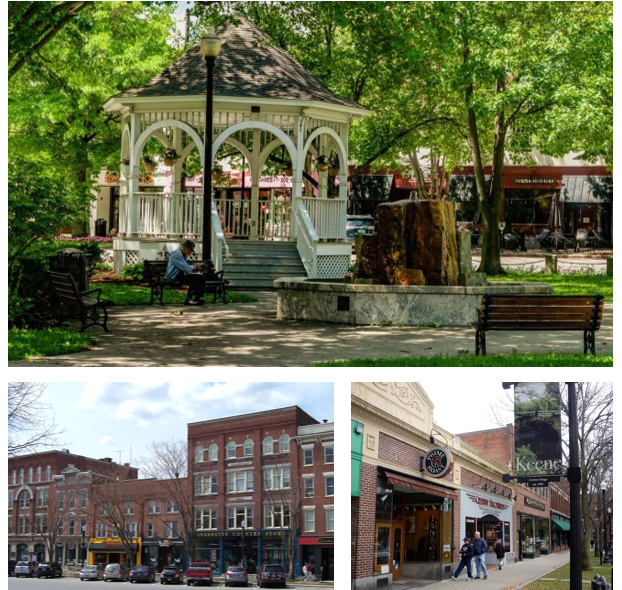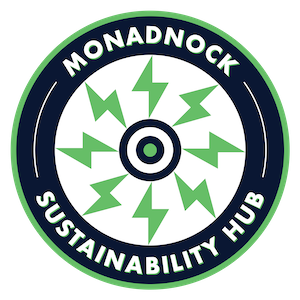By Todd Horner, Keene Bicycle and Pedestrian Advisory Committee
 The City of Keene Bicycle and Pedestrian Advisory Committee (BPPAC) would like to call your attention to an important project scheduled to begin in the near future. Downtown Keene will be undergoing major construction as soon as next spring. Underground infrastructure, including century-old sewer mains, are at the end of their useful life and need to be replaced. The construction footprint will include Central Square, Upper Main Street, and neighboring blocks of adjacent streets. The project is expected to last two to three years.
The City of Keene Bicycle and Pedestrian Advisory Committee (BPPAC) would like to call your attention to an important project scheduled to begin in the near future. Downtown Keene will be undergoing major construction as soon as next spring. Underground infrastructure, including century-old sewer mains, are at the end of their useful life and need to be replaced. The construction footprint will include Central Square, Upper Main Street, and neighboring blocks of adjacent streets. The project is expected to last two to three years.
This is a once-in-a-generation project. Accessing and replacing underground infrastructure will require digging up and disassembling much of the streetscape. The construction period will raise challenges, most notably for Main Street businesses, but the project also brings immense opportunity to take downtown to the next level. We have a great downtown today, but it has the potential to be world-class.
Since Main Street must be taken apart, we as a community must decide how it should be put back together again. Different options are beginning to take shape. BPPAC encourages you to visit the project website, where you’ll find preliminary design concepts for Main Street, Gilbo Avenue, and Central Square.
Some of the design concepts accommodate walking and bicycling more than others. BPPAC supports scenarios that widen sidewalks, create protected bike lanes on Main Street, maximize safety, and calm motorized traffic. We support scenarios that expand and connect the park in Central Square to sidewalks on the northern edge of the square. We support these measures and others that would enhance the experience of people on foot, bike, or wheelchair in our downtown because they would:
- Support the local economy by raising property values, reducing transportation expenses (thereby freeing up disposable income), increasing local business activity, and helping to attract young, talented workers. Our downtown also lies at the center of an extensive rail trail network, creating substantial potential for tourist activity associated with walking and cycling. This potential was well documented in a report authored by UNH Cooperative Extension, which was accepted by City Council’s Municipal Services, Facilities, and Infrastructure Committee in April 2022.
- Help create a downtown that welcomes everyone, no matter your age or ability. Whether you’re an older adult using a mobility aid, a wheelchair user, a parent pushing a stroller, or a kid riding a bike, downtown should be a place that you can safely and conveniently navigate.
- Help fight climate change. In the United States, transportation is the leading source of greenhouse gas emissions, largely from personal vehicles. Vehicle electrification on its own will not be enough to meet the city’s official goal of achieving net zero carbon emission in all sectors, including transportation, by 2050.
- Help us connect as a community. Public space for people to gather on foot creates opportunities for cultural events, festivals, outdoor dining, and simply bumping into neighbors. A study out of the University of New Hampshire found that residents in more walkable neighborhoods in Portsmouth and Manchester, NH had higher levels of trust in their neighbors.
- Improve the experience of motorists. Yes, walkable and bikeable environments can benefit drivers too. If more people choose to walk and bike downtown because it’s safe, enjoyable, and convenient, that means fewer cars on the road and less congestion. Also, let’s remember that every motorist is also at some point a pedestrian during their journey to downtown stores and restaurants.
Ultimately, our elected officials on city council will determine the final design that’s implemented. They’ll make their decision based in part on input they hear from the community. If they don’t hear from community members who value walking and biking in our downtown, then pedestrian and bike infrastructure might not be prioritized as it should be.
Opportunities for public input are posted on the project website. We encourage you to reach out to your city councilors to communicate your perspective. BPPAC is also positioned to act as a liaison between members of the public and city council. If you’d like to speak with BPPAC about the project, you can contact Todd Horner at tohorner@gmail.com.
While BPPAC’s primary mission is to represent the interests of pedestrians and cyclists, we would be remiss if we didn’t underscore the challenges that businesses will face during the construction period. We must rally around our local establishments during what will no doubt be a trying time. Businesses will remain open during construction. Let’s make sure that our family members, friends, and neighbors know that. Our downtown won’t be a great place to walk and bicycle without great restaurants, shops, and other establishments.
